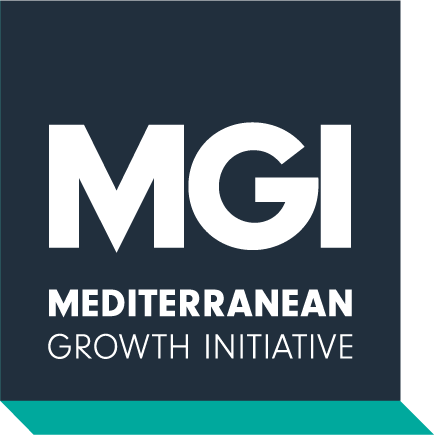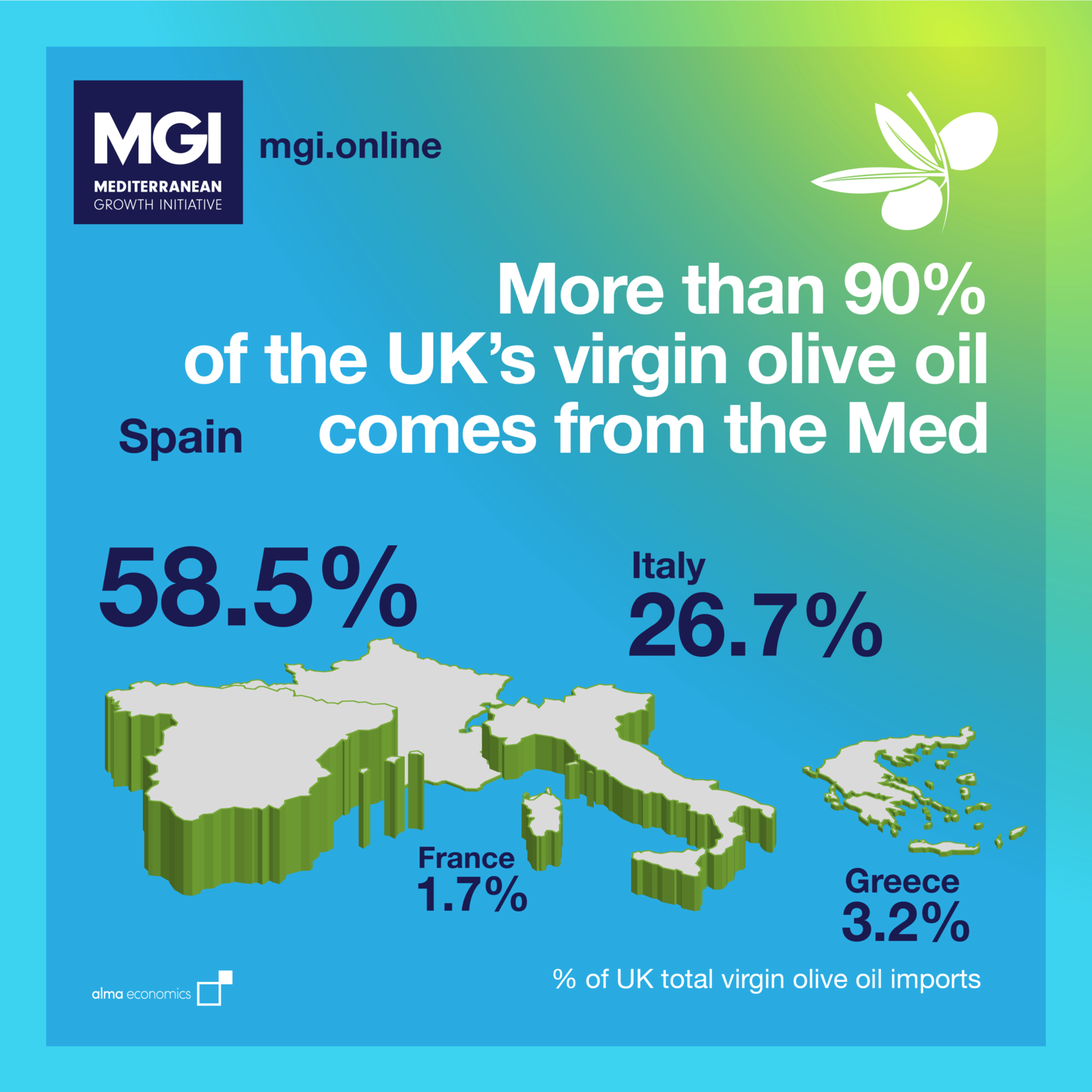Brexit
Brexit, an abbreviation for "British exit", refers to the United Kingdom’s decision in a June 23, 2016 referendum to withdraw from the European Union. The process of leaving the EU formally began on March 29, 2017, when British Prime Minister Theresa May invoked Article 50 of the Lisbon Treaty, and is expected to conclude in March next year when the UK is due to formally leave the EU.
In this series of infographics, we explore trade patterns between the UK and the countries of the Mediterranean. Also, make sure to stay connected through our MGI Twitter account.
UK Trade with Med countries
UK Trade with non-EU Med countries is only a fraction of UK Trade with the EU, but it has grown by 65% in the last decade compared to almost no growth in UK-EU Med trade
Virgin olive oil
Almost all virgin olive oil consumed in the UK comes from the Med, with more than half originating in Spain
Top 3 Traded Goods
UK Trade with EU Med countries is dominated by vehicles, aircrafts and nuclear tech, moving in both directions
Oil imports from the Med
The UK’s oil imports from the Med have greatly increased over the last 20 years
Oil imports from the Med
The UK is importing 13% of its oil from Med countries, sharply up from less than 2% back in the late 90’s
Top 3 Traded Goods
Precious and semi-precious stones are the UK’s largest export to European Med countries (excluding EU), while cars and car parts its largest import
% of exports going to the UK - Top 5 Med countries
8.5% of total Israeli exports are to the United Kingdom – the highest share recorded amongst Med countries
Top 3 Traded Goods
UK Trade with the Levant is dominated by precious and semi-precious stones, plastics, vehicles and nuclear tech, with Israel being the UK’s main trade partner in the region
% of imports originating in the UK - Top 5 Med countries
More than 6% of Israel and Cyprus’s total imports originate in the UK
Top 3 Traded Goods
UK’s oil imports from North Africa are four times higher than its nuclear tech exports to the region














